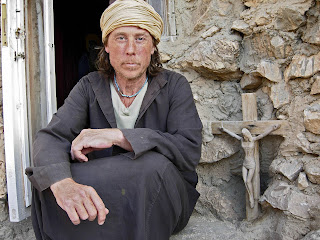Happy Halloween!
This being Halloween in North America I thought I'd post some Buddhist-Horror movies. Not exactly a huge genre but there are a few. Here's two of the better ones. Happy Halloween!

Jigoku - (Japan, 1960)
Shocking, outrageous, and poetic, Jigoku (Hell, a.k.a. The Sinners of Hell) is the most innovative creation from Nobuo Nakagawa, the father of the Japanese horror film. After a young theology student flees a hit-and-run accident, he is plagued by both his own guilt-ridden conscience and a mysterious, diabolical doppelganger. But all possible escape routes lead straight to hell— literally. In the gloriously gory final third of the film, Nakagawa offers up his vision of the underworld in a tour de force of torture and degradation. A striking departure from traditional Japanese ghost stories, Jigoku, with its truly eye-popping (and -gouging) imagery, created aftershocks that are still reverberating in contemporary world horror cinema.
Torrentreactor
 Kwaidan - (Japan, 1964)
Kwaidan - (Japan, 1964)This is a collection of 4 Japanese ghost stories originally written by the American writer Lafcadio Hearn, who lived in Japan in the 1800s and adopted it as his homeland. One of the most famous stories is "Hoichi the Earless" about a blind biwa player haunted by the ghosts of samurai. A Buddhist monk writes the Heart Sutra on Hoichi's body to make him invulnerable to the ghosts, but forgets to write on his ears! This story reflects the belief of the power of Buddhist sutras to ward off evil spirits. Because of the influence of Christianity in the West, crucifixes are believed to ward off vampires and evil spirits - in Buddhism in the East, it is not the image of the deity, but the power of the written word, especially in its Sanskrit mantra form, to protect the believer. You don't hold up a picture or statue of Buddha to ward off evil, you use Chinese characters! It demonstrates the power of the Dharma not residing in the physical person of the Buddha, but in his teachings, and in the value of literacy in premodern society.
TPB

















































